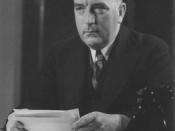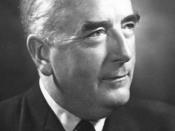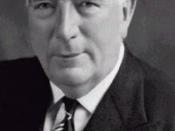After the war Australia found itself dealing with immense consumer shortages. Leading to extensive strikes and turmoil throughout the country's major industries expecially the black coalfields. This created a damaging shortage of vital energy needed for basic industries, the steel industry for example was reduced to idle working conditions due to the lack of coal. Decreasing the amount of available raw materials (steel) in-turn had a hampering affect on industries that needed steel for production and expansion as well as the overall condition of the economy.
The post war period in Australia commenced with chronic shortages of consumer and capital goods. This position however changed dramatically from 1950 to 1953. The post war public works program that began in 1939 with a per capita at 8.7 and in 1950 for the first time dramatically increased from 10.2 to 12.5. From 1939-1949 when the average increase was .15 and from 1950 to 1956 the average increase was .35
in per capita at constant prices. (Boehm, E.A P. 45) The strength and momentum gained during the 1950's reflected strong leadership and strong industry. This replaced the pessimism and stagnation of the 1930's and the 1940's with optimism and the general urge to make material advances. By the second half of 1952 the inflationary condition had eased with the return to a buyers market for the first time since the war. (Boehm, E.A P. 51)
Sir Robert Menzies served as the Australian Prime Minister for 17 years (1949-1966). Menzies' rise to power was due to the split up of Australia's major political party the United Australian Party. Later leading to a rise of Menzies' Liberal Party, which attracted members of other party's who opposed labor unions' internal policy. He was the only Prime minister since the First World War to retire on his...


